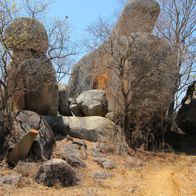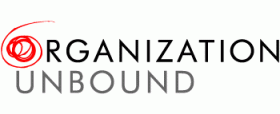-
 I’m seeing it again. The tilt toward everything.
I’m seeing it again. The tilt toward everything.Most people say it is impossible. That community is always closed. That we only know where we belong when we know whom and what we have barred. In a review of several books on community participation, Malcolm Payne argues that community identity is necessarily formed through a definition of inclusion and exclusion, of who belongs and who does not. Social Identity Theory agrees with him. It tells us that as soon as humans are placed into groups of any kind (even random groups in a lab), they immediately begin to exaggerate their differences with other groups and to compare those other groups unfavorably with their own.
I imagine this description is probably a fair one of most human experience. But is it an ironclad sociological law or is it simply the history of who we have been so far?
In my years of studying and working with Santropol Roulant in Montreal, the most profound thing I observed was that the organization quietly acted as if it were for everyone, as if everyone in the world somehow belonged, even people who had never heard of the place.
This unbounded acceptance wasn’t true in form, of course. There was an explicit definition of membership (i.e., who could vote at the annual general meeting), though that definition was broad and gentle. And the organization didn’t have an unlimited number of staff or client or volunteer slots. But I always sensed that there was a deeper kind of intention at work. Anyone who walked in the door had a place there, if only for a moment. There was no questioning of anyone’s fundamental connection to the organization, their right to be there, to take part. (This seemed to me to be true even in the rare event that someone was asked to leave. Something like, “You still belong here. You just need to belong from farther away.”) The underlying identity of the organization was radically whole.
I think this is one of the reasons that people often told me they didn’t feel sharp divisions and cliques at the Roulant. New arrivals told me this. Staff who had been there for years told me this. People always sounded slightly surprised when they said it. When the fundamental pulse that defines who we are includes, literally, everyone, then smaller group identities, though they may exist, seem to lose their weight.
Now here at Kufunda Village in Zimbabwe, I see a similar intention. In a previous post, Tana wrote about how welcoming it is here. That welcome appears to come from the superficially absurd belief that everyone everywhere is somehow a Kufundee.
The belief is imperfect. Holding the intention can be difficult, especially in the face of economic instability and hardship. People here can struggle with their own sense of belonging in a daily, lived way. But no one is excluded by definition. What it means to be a Kufundee does not fundamentally rest on what it means not to be a Kufundee.
Such a stance might seem impractical, but in the few (the very few) places I have seen it at work, it strikes me as anything but. When we lean, however falteringly, toward oneness, our normal organizational divisions (the ones we think of as “internal”) dampen. Our sense of expectancy (Who might walk in the door today?) grows. We become more creative. We become braver. We make room for the parts of ourselves that we normally exclude from the work we do. And strangely, by throwing our doors permanently open, we may become safer, due to the webs of care, support, and attention we create.
I think we also become more deeply in touch with what the true purpose of our organizations really is. On the surface, Planned Lifetime Advocacy Network (PLAN) in British Columbia is a narrowly defined organization with a sliver of a constituency: adults with developmental disabilities. But PLAN is one of the wisest organizations I know at recognizing the universal call inside of its particular mission. Founded by parents, PLAN began its life with a rights-based, advocacy approach to its work. But the founders soon began asking themselves deeper questions: What is it we really want to create for our children? What is a good life?
These questions not only energized PLAN. They also caused it to recognize that the root of what they were seeking belonged to everyone. A good life for someone with a developmental disability is no different from a good life for anyone else. We all seek the things PLAN began to focus on: relationships, security, home, contribution. Thus, even though PLAN’s direct work continues to be focused on people with developmental disabilities, the organization has become very attuned to the core yearnings of everyone who crosses its path. It is a rich place not just for “the people at the center,” but for staff, board members, funders, interested politicians, and visitors. PLAN’s understanding of its own universal nature eventually became so embedded that some of the founders started an offshoot project, Philia, which focuses on ways of developing meaningful citizenship for anyone who is marginalized (and I imagine that, in the end, we are all marginalized in one way or another).
PLAN’s history shows us two roads for any identity-based organization to go down. The first involves sharply defending what makes us different. The second asks us to go far enough into the identity in question that we can find the essential human yearnings underneath. The first approach is shallow, and it fractures the world. It causes us to continually focus on the dispiriting question: “Who is this work not for?” The second is deep and it connects us all. It answers that dispiriting question with an uplifting commitment: “There is no one this work is not for.”
All social purpose organizations seek the same essential things for the people they work with: health, respect, participation, growth, freedom, creativity, connection, meaning. Working from this common understanding – knowing that everyone belongs to the work we do – does do not diminish the honor and pride we can take in the different social categories and cultural traditions of our experience. It increases our reverence for and delight in them, knowing that they are the many-colored and brilliant manifestations of the one human heart.
I am writing this outdoors during a rapid dusk. I have carried our little wicker couch out into the clearing in front of the cottage. The first rain in six months is coming soon, maybe tonight. The light is heavy in the sky. It flexes and shifts like a tendon.
It is a strange light to me. It seems different than the light I have seen at home. It cuts the atmosphere at a new angle. It refracts through the red Zimbabwean dust. Still, I think it is the same light. I think I will begin to recognize it if I can sit here long enough.
Oneness




8 Responses and Counting...
Beautiful piece, beautifully written. It is great to see you and Tana are doing great. I like the thought that at the core, regardless of our work as social purpose organizations, whether it’s cleaning or delivering food or lighting up Africa, we seek the same essential things and if so, to some degree, we are related. When we operate at the level of differences and divisions we are operating at the surface. At the core, we are related and that creates all sorts of positive possibilities.
Rennie, beautiful piece of writing, and clearly provocative – thank you! Warmest to you both.
Beautifully said, but we are even more than related , we are THE SAME. That’s a comment from Madoo, and it is so deeply true.
Veetkam
Thank you for this beautifully-articulated vision of how we can all chose to be in the world. Fantastic food for thought, conversation, and embodiment. I have already read it twice and shared it around. Thank you for shinning your light from Kufunda!
“We become braver. We make room for the parts of ourselves that we normally exclude”. Rennie, this gets to the idea of vulnerability and fear. So often (too often) the division between self and other is based on fear. By practicing vulnerability — robust vulnerability, if you like– we make room for the parts of our selves to which you allude.
thx
Thanks, everyone, for the comments. This post is near and dear to my heart. If I had to pick one theme that is most resonant for me from all the stuff we’ve been seeing and reflecting on, it would be ‘oneness.’ I think that somehow it is at the core of all of the other themes, and it’s a lovely thing to pursue in our personal lives as well as our organizational lives.
[…] my last post, I talked about the enlivening effect of seeing every person as belonging to our social purpose […]
Thanks again for your writing and insight. Continued good health, inspiration, opportunity and wild adventures.